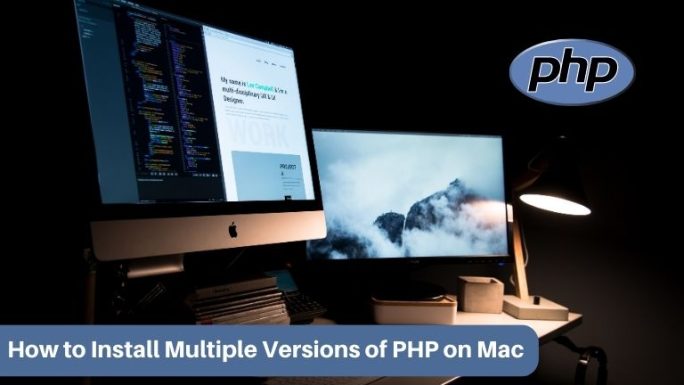Learn how to install multiple versions of PHP on your Mac with this comprehensive guide. Follow step-by-step instructions, FAQs, and expert tips to seamlessly set up different PHP versions for your development needs.
As a developer, you may often find yourself in situations where you need to work with different versions of PHP for compatibility reasons or to test your code on various environments. However, installing multiple versions of PHP on a Mac can be a daunting task without proper guidance.
In this guide, we will walk you through the process of installing multiple versions of PHP on your Mac system. Whether you’re a beginner or an experienced developer, this step-by-step tutorial will help you set up different PHP versions effortlessly. Let’s dive in!
What is PHP and why would you need multiple versions?
All Heading
PHP (Hypertext Preprocessor) is a popular scripting language used primarily for web development. It powers numerous websites and applications across the internet. PHP evolves with time, and new versions are released periodically, each introducing new features, bug fixes, and improvements.
Sometimes, you may encounter projects that require a specific PHP version due to compatibility reasons. Additionally, having multiple PHP versions allows you to test your code on different environments, ensuring it works seamlessly across various setups.
Preparing your Mac for PHP installation
Before diving into the installation process, ensure your Mac is ready for PHP setup. Follow these steps to prepare your system:
- Check your macOS version: Make sure you’re running a compatible macOS version. PHP installations typically work on macOS High Sierra (10.13) or later.
- Update Xcode command line tools: Open the Terminal and execute the command
xcode-select --install. This will prompt you to install the necessary tools for development. - Check for existing PHP installations: Verify that there are no conflicting PHP installations on your system. Use the command
php -vin the Terminal to check if PHP is already installed. If it shows a version, consider uninstalling it before proceeding further.
Installing Homebrew package manager
To streamline the installation process and manage different PHP versions effortlessly, we’ll use Homebrew, a popular package manager for macOS. Follow these steps to install Homebrew:
- Open Terminal: Launch the Terminal application on your Mac. You can find it in the Applications/Utilities folder or use Spotlight (⌘+Space) and search for “Terminal.”
- Install Homebrew: Copy and paste the following command into the Terminal and hit Enter:
/bin/bash -c “$(curl -fsSL https://raw.githubusercontent.com/Homebrew/install/HEAD/install.sh)” - Verify installation: After the installation completes, run the brew –version in the Terminal to confirm that Homebrew is installed correctly. You should see the version number displayed.
Installing different PHP versions using Homebrew
Now that Homebrew is installed, we can proceed with installing multiple versions of PHP. Homebrew allows us to manage different PHP versions effortlessly using its formulae. Run the following commands in the Terminal to install PHP versions:
- PHP 7.4: To install PHP 7.4, execute the following command:
brew install php@7.4 - PHP 8.0: To install PHP 8.0, execute the following command:
brew install php@8.0
Switching between PHP versions
After installing multiple PHP versions, you may need to switch between them depending on your project requirements. Use the brew link command to switch between PHP versions. Here’s how:
- Switch to PHP 7.4: Execute the following command to switch to PHP 7.4:
brew link –overwrite –force php@7.4 - Switch to PHP 8.0: Execute the following command to switch to PHP 8.0:
brew link –overwrite –force php@8.0
Configuring PHP extensions for each version
PHP extensions are crucial for enabling additional functionality in PHP. With multiple PHP versions, you might require different extensions for each version. Here’s how you can configure PHP extensions for specific versions:
- Locate the php.ini file: In the Terminal, run the command
php --ini. It will display the path of the loaded php.ini file. - Edit the php.ini file: Open the php.ini file in a text editor of your choice. Make the necessary changes to enable or disable extensions based on your requirements.
- Restart the web server: After saving the changes, restart the web server for the modifications to take effect.
Setting up virtual hosts for multiple PHP versions
When working with different PHP versions, it’s essential to set up virtual hosts to ensure that each project uses the correct PHP version. Follow these steps to configure virtual hosts:
- Open the hosts file: Open the Terminal and enter the following command to open the hosts file:
sudo nano /etc/hosts
- Add virtual hosts: In the hosts file, add entries for each virtual host, specifying the desired PHP version and the corresponding domain.
For example:127.0.0.1 project1.local # PHP 7.4
127.0.0.1 project2.local # PHP 8.0 - Save and exit: Press Ctrl+X, then Y, and finally Enter to save the changes and exit nano.
- Restart the web server: Restart the web server for the changes to take effect.
Troubleshooting common issues
While installing multiple versions of PHP, you may encounter some common issues. Here are a few troubleshooting tips to resolve them:
- Dependency conflicts: If you face dependency conflicts during the installation, try updating Homebrew using
brew updateand then reinstalling PHP. - PHP version not recognized: If your system doesn’t recognize the newly installed PHP version, ensure that the Homebrew PHP directory is included in your PATH environment variable.
- Incorrect configuration: Double-check your configuration files (e.g., php.ini, httpd.conf) for any errors or misconfigurations that may cause issues.
Conclusion
Installing multiple versions of PHP on your Mac can be a valuable asset for web development and testing purposes. With the help of Homebrew, you can effortlessly manage and switch between PHP versions, ensuring compatibility and efficiency. Follow the step-by-step instructions provided in this guide to set up different PHP versions and unlock the flexibility needed for your development projects.
Frequently Asked Questions (FAQs)
Yes, you can install and use multiple PHP versions simultaneously on your Mac. Follow the installation instructions mentioned earlier to install both PHP 7 and PHP 8 on your system.
To check the currently installed PHP version, open the Terminal and run the following command: php -v. This will display the PHP version installed on your Mac.
Certainly! With the ability to switch between PHP versions using Homebrew, you can use different PHP versions for different projects on your Mac.
Installing multiple PHP versions itself does not significantly impact system performance. However, having multiple versions installed may consume additional disk space. It’s recommended to uninstall any PHP versions you no longer need to free up space.
Yes, you can uninstall a specific PHP version installed using Homebrew. Run the following command to uninstall a PHP version: brew uninstall php@{version}. Replace {version} with the specific PHP version you want to uninstall.
Although it’s technically possible to have multiple PHP versions running simultaneously on your Mac, it requires additional configuration and setup. It’s recommended to switch between versions based on your project requirements to avoid conflicts and streamline development.













Recent Comments